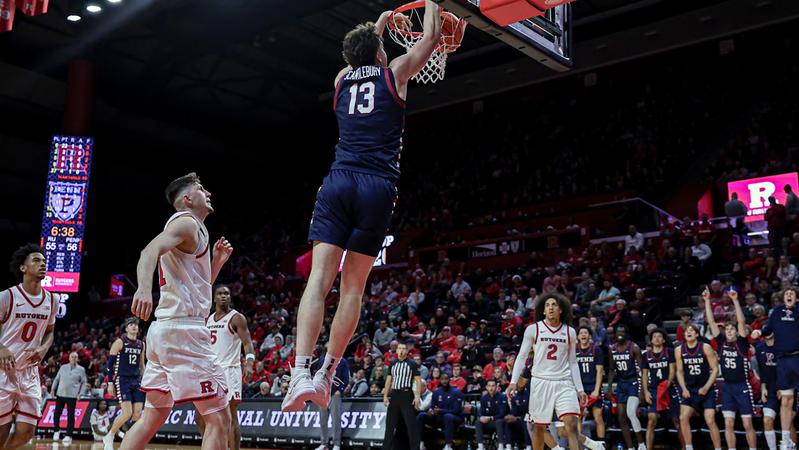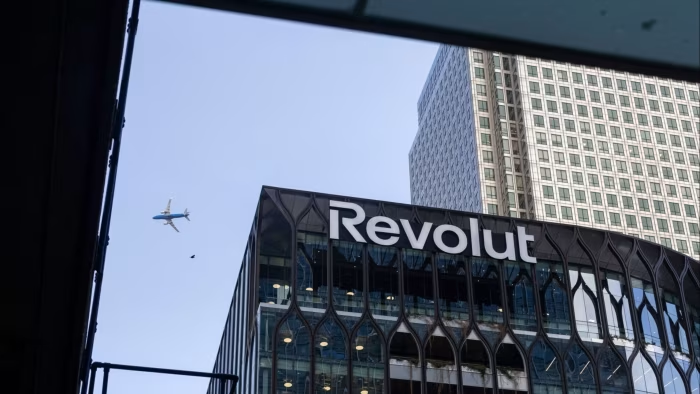
Photography by ThirDWheel Photo
VALLEY CITY, N.D. — Dakota Wesleyan Men’s Basketball traveled to North Dakota to face the Valley City State Vikings in the second matchup of their home-and-home out-of-conference…

Photography by ThirDWheel Photo
VALLEY CITY, N.D. — Dakota Wesleyan Men’s Basketball traveled to North Dakota to face the Valley City State Vikings in the second matchup of their home-and-home out-of-conference…
Wang, H. et al. Towards a universal model for carbon dioxide uptake by plants. Nat. Plants 3, 734–741 (2017).
Chen, C. et al. CO2 fertilization of terrestrial photosynthesis inferred from site to global scales. Proc. Natl Acad. Sci. USA 119, e2115627119 (2022).
Ruehr, S. et al. Evidence and attribution of the enhanced land carbon sink. Nat. Rev. Earth Environ. 4, 518–534 (2023).
Myneni, R. B. et al. Global products of vegetation leaf area and fraction absorbed PAR from one year of MODIS data. Remote Sens. Environ. 83, 214–231 (2002).
Chen, C. et al. China and India lead in greening of the world through land-use management. Nat. Sustain. 2, 122–129 (2019).
Piao, S. et al. Characteristics, drivers and feedbacks of global greening. Nat. Rev. Earth Environ. 1, 14–27 (2020).
Pu, J. et al. Sensor-independent LAI/FPAR CDR: reconstructing a global sensor-independent climate data record of MODIS and VIIRS LAI/FPAR from 2000 to 2022. Earth Syst. Sci. Data 16, 15–34 (2024).
Keenan, T. F. et al. Recent pause in the growth rate of atmospheric CO2 due to enhanced terrestrial carbon uptake. Nat Communications 7, 13428 (2016).
Keenan, T. F. & Riley, W. J. Greening of the land surface in the world’s cold regions consistent with recent warming. Nat. Clim. Change 8, 825–828 (2018).
Pugh, T. A. et al. Important role of forest disturbances in the global biomass turnover and carbon sinks. Nat. Geosci. 12, 730–735 (2019).
Haverd, V. et al. Higher than expected CO2 fertilization inferred from leaf to global observations. Glob. Chang. Biol. 26, 2390–2402 (2020).
Walker, A. P. et al. Integrating the evidence for a terrestrial carbon sink caused by increasing atmospheric CO2. N. Phytol. 5, 2413–2445 (2020).
Keenan, T. F. et al. A constraint on historic growth in global photosynthesis due to rising CO2. Nat. Clim. Chang. 13, 1376–1381 (2023).
Winkler, A. J. et al. Carbon system state determines warming potential of emissions. PLoS ONE 19, e0306128 (2024).
Zhu, Z. et al. Greening of the Earth and its drivers. Nat. Clim. Change 6, 791–795 (2016).
Wang, S. et al. Drylands contribute disproportionately to observed global productivity Increases. Science Bulletin 68, 224–232 (2023).
Poulter, B. et al. Contribution of semi-arid ecosystems to interannual variability of the global carbon cycle. Nature 509, 600 (2014).
Xu, L. et al. Widespread decline in greenness of Amazonian vegetation due to the 2010 drought. Geophys. Res. Lett. 38, L07402 (2011).
Doughty, C. E. et al. Drought impact on forest carbon dynamics and fluxes in Amazonia. Nature 519, 78–82 (2015).
Yang, J. et al. Amazon drought and forest response: largely reduced forest photosynthesis but slightly increased canopy greenness during the extreme drought of 2015/2016. Glob. Change Biol. 24, 1919–1934 (2018).
Thornley, J. H. Instantaneous canopy photosynthesis: analytical expressions for sun and shade leaves based on exponential light decay down the canopy and an acclimated non-rectangular hyperbola for leaf photosynthesis. Ann. Bot. 89, 451–458 (2002).
Brodersen, C. R. & Vogelmann, T. C. Do changes in light direction affect absorption profiles in leaves? Funct. Plant Biol. 37, 403–412 (2010).
Li, X. & Xiao, J. Mapping photosynthesis solely from solar-induced chlorophyll fluorescence: A global, fine-resolution dataset of gross primary production derived from OCO−2. Remote Sens 11, 2563 (2019).
Stich, S. et al. Trends and Drivers of Terrestrial Sources and Sinks of Carbon Dioxide: An Overview of the TRENDY Project. Glob. Biogeochem. Cycles 38, e2024GB008102 (2024).
Eyring, V. et al. Overview of the Coupled Model Intercomparison Project Phase 6 (CMIP6) experimental design and organization. Geosci. Model Dev. 9, 1937–1958 (2016).
Chen, Y. et al. The direct and indirect effects of the environmental factors on global terrestrial gross primary productivity over the past four decades. Environ. Res. Lett. 19, 014052 (2023).
Jung, M. et al. The FLUXCOM ensemble of global land-atmosphere energy fluxes. Sci Data 6, 74 (2019).
Nelson, J. A. et al. X-BASE: the first terrestrial carbon and water flux products from an extended data-driven scaling framework, FLUXCOM-X. Biogeosciences 21, 5079–5115 (2024).
Cai, W. & Prentice, I. C. Recent trends in gross primary production and their drivers: analysis and modelling at flux-site and global scales. Environ. Res. Lett. 15, 124050 (2020).
O’Sullivan, M. et al. Climate-driven variability and trends in plant productivity over recent decades based on three global products. Glob. Biogeochem. Cyc. 34, e2020GB006613 (2020).
Myneni, R. B. et al. Increased plant growth in the northern high latitudes from 1981 to 1991. Nature 386, 698–702 (1997).
Zhou, L. et al. Variations in northern vegetation activity inferred from satellite data of vegetation index during 1981 to 1999. J. Geophys. Res. Atmos. 106, 20069–20083 (2001).
Park, T. et al. Changes in growing season duration and productivity of northern vegetation inferred from long-term remote sensing data. Environ. Res. Lett. 11, 084001 (2016).
Winkler, A. J. et al. Slowdown of the greening trend in natural vegetation with further rise in atmospheric CO2. Biogeosciences 18, 4985–5010 (2021).
Farquhar, G. D., von Caemmerer, S. & Berry, J. A. A biochemical model of photosynthetic CO2 assimilation in leaves of C3 species. Planta 149, 78–90 (1980).
Gutschick, V. P. Photosynthesis model for C3 leaves incorporating CO2 transport, propagation of radiation, and biochemistry. 1. Kinetics and their parameterization. Photosynthetica 18, 549–568 (1984).
Collatz, G. J. et al. Physiological and environmental-regulation of stomatal conductance, photosynthesis and transpiration – a model that includes a laminar boundary-layer. Agric. For. Meteorol. 54, 107–136 (1991).
Stocker, B. D. et al. P-model v1.0: an optimality-based light use efficiency model for simulating ecosystem gross primary production. Geosci. Model Dev. 13, 1545–1581 (2020).
Liang, S. et al. The global land surface satellite (GLASS) product suite. Bull. Am. Meteorol. Soc. 102, E323–E337 (2021).
Yan, K. et al. HiQ LAI: A high-quality reprocessed MODIS leaf area index dataset with better spatiotemporal consistency from 2000 to 2002. Earth Syst. Sci. Data 16, 1601–1622 (2024).
Cao, S. et al. Spatiotemporally consistent global dataset of the GIMMS leaf area index (GIMMS LAI4g) from 1982 to 2020. Earth Syst. Sci. Data 15, 4877–4899 (2023).
Ma, H. & Liang, S. Development of the GLASS 250-m leaf area index product (version 6) from MODIS data using the bidirectional LSTM deep learning model. Remote Sens. Environ. 273, 112985 (2022).
Wei, F. et al. Divergent trends of ecosystem-scale photosynthetic efficiency between arid and humid lands across the globe. Glob. Ecol. Biogeogr. 31, 1824–1837 (2022).
Dardel, C. et al. Re-greening Sahel: 30 years of remote sensing data and field observations (Mali, Niger). Remote Sens. Environ. 140, 350–364 (2014).
Brandt, M. et al. Ground- and satellite-based evidence of the biophysical mechanisms behind the greening Sahel. Glob. Change Biol. 21, 1610–1620 (2015).
Yuan, W. et al. Increased atmospheric vapor pressure deficit reduces global vegetation growth. Sci. Adv. 5, eaax1396 (2019).
Fatichi, S. et al. Partitioning direct and indirect effects reveals the response of water-limited ecosystems to elevated CO2. Proc. Natl Acad. Sci. 113, 12757–12762 (2016).
Knyazikhin, Y. et al. Synergistic algorithm for estimating vegetation canopy leaf area index and fraction of absorbed photosynthetically active radiation from MODIS and MISR data. J. Geophys. Res. 103, 32257–32276 (1998).
Norby, R. J. et al. Forest response to elevated CO2 is conserved across a broad range of productivity. Proc. Natl Acad. Sci. USA 102, 18052–18056 (2005).
Kaptué, A. T., Prihodko, L. & Hanan, N. P. On regreening and degradation in Sahelian watersheds. Proc. Natl Acad. Sci. USA 112, 12133–12138 (2015).
Min, J. et al. Understanding spatial patterns in the drivers of greenness trends in the Sahel-Sudano-Guinean region. Big Earth Data 7, 298–317 (2023).
Zhang, Y. et al. Multiple afforestation programs accelerate the greenness in the ‘Three North’ region of China from 1982 to 2013. Ecol. Indic. 61, 404–412 (2016).
Lu, F. et al. Effects of national ecological restoration projects on carbon sequestration in China from 2001 to 2010. Proc. Natl Acad. Sci. USA 115, 4039–4044 (2018).
Ray, D. K. & Foley, J. A. Increasing global crop harvest frequency: recent trends and future directions. Environ. Res. Lett. 8, 044041 (2013).
Mueller, N. D. et al. Closing yield gaps through nutrient and water management. Nature 490, 254–257 (2012).
Running, S. W. & Zhao, M. Daily GPP and Annual NPP (MOD17A2/A3) Products NASA Earth Observing System MODIS Land Algorithm—User’s Guide V3. 28 (MODIS Land Team, 2015).
Yuan, W. et al. Deriving a light use efficiency model from eddy covariance flux data for predicting daily gross primary production across biomes. Agric. For. Meteorol. 143, 189–207 (2007).
Prentice, I. C. et al. Balancing the costs of carbon gain and water transport: testing a new theoretical framework for plant functional ecology. Ecol. Lett. 17, 82–91 (2014).
Korson, L., Drost-hansen, W. & Millero, F. J. Viscosity of water various temperatures. J. Phys. Chem. 73, 34–39 (1969).
Bao, S. et al. Environment-sensitivity functions for gross primary productivity in light use efficiency models. Agric. For. Meteorol. 312, 108708 (2022).
Kalliokoski, T. et al. Decomposing sources of uncertainty in climate change projections of boreal forest primary production. Agric. For. Meteorol. 262, 192–205 (2018).
Sulla-Menashe, D. & Friedl, M. A. User Guide to Collection 6 MODIS Land Cover (MCD12Q1 and MCD12C1) Product (USGS, 2018).
Pastorello, G. et al. The FLUXNET2015 dataset and the ONEFlux processing pipeline for eddy covariance data. Sci. Data 7, 225 (2020).
Zheng, Y. et al. Improved estimate of global gross primary production for reproducing its long-term variation, 1982–2017. Earth Syst. Sci. Data 12, 2725–2746 (2020).
Wang, L. et al. Evaluation of the latest MODIS GPP products across multiple biomes using global eddy covariance flux data. Remote Sens 9, 418 (2017).
Zhu, W., Zhao, C. & Xie, Z. An end-to-end satellite-based GPP estimation model devoid of meteorological and land cover data. Agric. For. Meteorol. 331, 109337 (2023).
Bai, Y. et al. Different satellite products revealing variable trends in global gross primary production. J. Geophys. Res. 128, e2022JG006918 (2023).
Baret, F. et al. Evaluation of the representativeness of networks of sites for the global validation and intercomparison of land biophysical products: proposition of the CEOS-BELMANIP. IEEE Trans. Geosci. Remote Sens 44, 1794–1803 (2006).
Gier, B. K. et al. Representation of the terrestrial carbon cycle in CMIP6. Biogeosciences 21, 5321–5360 (2024).
Yan, K. et al. Evaluation of MODIS LAI/FPAR Product Collection 6. Part 1: Consistency and Improvements. Remote Sens 8, 350 (2016).
Yan, K. et al. Evaluation of MODIS LAI/FPAR Product Collection 6. Part 2: Validation and Intercomparison. Remote Sens 8, 460 (2016).
Jin, H. et al. Intercomparison and validation of MODIS and GLASS leaf area index (LAI) products over mountain areas: A case study in southwestern China. Int. J. Appl. Earth Obs. Geoinf. 55, 52–67 (2017).
Zhang, X. et al. An insight into the internal consistency of MODIS global leaf area index products. IEEE Trans. Geosci. 62, 1–16 (2024).
Arneth, A. et al. Terrestrial biogeochemical feedbacks in the climate system. Nat. Geosci. 3, 525–532 (2010).
Heinze, C. et al. ESD reviews: climate feedbacks in the Earth system and prospects for their evaluation. Earth Syst. Dyn. 10, 379–452 (2019).

EUGENE, Ore. (AP) — Dante…


Unlock the Editor’s Digest for free
Roula Khalaf, Editor of the FT, selects her favourite stories in this weekly newsletter.
Revolut has clashed with dozens of former senior staff facing unexpectedly large tax bills from selling shares in the company, following incorrect information from the fintech.
The London-headquartered neobank informed ex-employees this month that they would have to pay national insurance contributions and income taxes on profits made from selling part of their stakes in Revolut, according to people familiar with the matter and internal correspondence reviewed by the Financial Times.
This came as a shock to the former staff, who were previously told by Revolut that their company share option plans (CSOPs) had been extended, and so would only be subject to capital gains tax, according to people familiar with the matter. The former employees have petitioned the company, the people added.
As capital gains tax is levied at 24 per cent, while the combination of the highest rate of income tax and national insurance contribution is 47%, the difference in earnings could be significant.
The row was ignited this month after former staff were invited to sell their shares back to the company in a share buyback round, which would value the fintech at $52bn, the Financial Times previously reported.
The share buyback was an attempt to help former employees cash in on the enormous increase in the valuation of Revolut, which was founded in 2015 and has since become Europe’s most valuable start up.
Revolut had initially told staff that they would have to participate in this round or their options would lapse. Revolut has since rowed back and reminded them that the buyback round is voluntary, one person close to the company said.
The disagreement centres on information that Revolut had previously given former staff about how long they would have to exercise their Company Share Option Plans (CSOPs).
Revolut has accepted that this information was incorrect, according to a person familiar with the bank’s position. Staff were told to seek independent tax advice, the person added.
CSOPs are options with generous tax benefits and are used by companies to retain staff. They typically allow staff the chance to buy company shares and only pay CGT, rather than national insurance and income tax, when selling the company shares.
Employees can generally start exercising their options three years after they have been granted, with the option lapsing after ten years. Employees who leave in good standing are given a brief window of time, usually a couple of months, to exercise these options.
However, Revolut incorrectly told some people who held these options that it had extended this “exercise window” from 60 days to ten years.
One lawyer who advises on CSOPs said that an extension of this scale sounded “implausible”. The solicitor added that it would not make commercial sense for a company to grant the same CSOP tax benefits to current and ex-employees, as it would provide no incentive to stay at the firm.
Revolut realised its information was wrong following an internal review, according to correspondence reviewed by the FT. It informed affected former staff members that the ten-year extension would be considered a “disqualifying event” by the UK’s tax authority, HM Revenue & Customs, and that any profits realised would be subject to both income tax and NIC.
Aside from the group of individuals affected, Revolut’s documentation generally referred to options lapsing after 60 days from leaving the company, according to one person familiar with the bank’s position.
The neobank has offered employees who did not participate in the buyback — and whose shares have technically lapsed — replacement shares on a one-for-one basis, according to one person familiar with the situation. However, these still do not have the tax benefits of CSOPs when exercised correctly. The person added that Revolut also clarified that it would not be forcing option holders to participate in the current buyback round.
Revolut declined to comment.
Former staff previously complained that the buyback was valued at a sharp discount to the company’s most recent fundraising efforts. Revolut concluded a fundraising round in September that valued the company at $75bn.
Revolut has also enticed staff with lucrative equity options. The neobank’s chief executive and co-founder Nik Storonsky said last week in a Russian-language interview that many of its staff were “dollar multimillionaires”.
Additional Reporting Emma Agyemang

Unlock the Editor’s Digest for free
Roula Khalaf, Editor of the FT, selects her favourite stories in this weekly newsletter.
A steep rally in Chinese stock markets has cooled in the past three months, as weak economic data and profit-taking bring this year’s steep rally to an end.
The MSCI China index has fallen 7.4 per cent since September, its worst three-month performance in an otherwise strong year for the country’s equities, with gains fuelled by optimism over Chinese technological innovation and government support for markets.
The index is still up 28.7 per cent in the year to date, with several investors and strategists attributing this quarter’s pullback to profit-taking. “Hong Kong and China have been up two years in a row,” said Nicholas Chui, a portfolio manager at Franklin Templeton. “Profit-taking is a very natural reaction.”
But recent weak economic data from China has contributed to cooling sentiment, highlighting the country’s structural challenges of low consumer confidence and deflation. Beijing’s crackdown on industrial overcapacity has led to a steep decline in investment that has not been offset by greater consumption.
“Recently released macro data is affecting sentiment,” said Wei Li, head of multi-asset investments for China at BNP Paribas.
November data showed falling fixed asset investment and consumer goods sales, as well as money supply, which together indicate cooling economic activity.
Chinese stocks have underperformed other Asian markets in the final three months of the year. South Korea’s Kospi has gained over 17 per cent, Japan’s Topix is up 7.8 per cent, and Taiwan’s Taiex has risen 7.3 per cent. India’s Nifty 50 index is up 5.8 per cent.
Tai Hui, chief Asia market strategist at JPMorgan Asset Management, said the decline was likely due to profit-taking as well as uncertainty over China’s growth prospects.
“Some of the macro numbers have been on the softer side,” he said.
Hui said investors were concerned that the weak growth would hit corporate earnings, which on average are still lower than when the MSCI China index peaked in 2021.
“Lots of the rally we’ve seen onshore and offshore China is valuation re-rating,” Hui said. “The risk is they will not be immediately rewarded with stronger earnings.”

In Hong Kong, falling levels of southbound investment from mainland China, which surged to record highs earlier this year and helped revive the territory’s capital markets, have also hit the market’s performance.
“The Hong Kong stock market is very sensitive to liquidity,” said BNP Paribas’s Wei. “If we look at the southbound flow in recent months, it actually dropped quite a lot.”
Despite the weak end to the year, many investors in Chinese equities remain optimistic.
“I think this is one of those times where you have a very natural and healthy correction,” Chui said. “It sets us up for a decent start to 2026.”
Looking ahead, some investors expect Beijing to step in and support economic growth, providing a backstop for sentiment and earnings, while enthusiasm over innovative Chinese technology companies remains strong.
“The recent central government conferences released very positive policies to support the market as well,” Wei said. “On one side is government support. The other side is technological innovation.”
Not everyone agrees that recent government announcements have been reassuring for investors worried about signs of China’s slowing economic growth.
“Policy commitment to bring growth on a higher trajectory is not super strong,” JPMorgan’s Hui said.

Unlock the Editor’s Digest for free
Roula Khalaf, Editor of the FT, selects her favourite stories in this weekly newsletter.
Two executives behind Europe’s newest battery plants have voiced support for a plan by Brussels to boost local content levels for car products as the continent seeks to weaken China’s grip on technologies critical to the electric transition.
Some carmakers have panned the “made in Europe” proposal as “very dangerous” and said it could slow the shift to electric vehicles. But the chief executive of Seat-Cupra said such rules for car parts were necessary for Europe to remain competitive as the carmaker opened its battery assembly plant in Barcelona last week.
“I think having a minimum amount of parts and also materials to be sourced from Europe for Europe is the natural answer,” said Markus Haupt, who heads the Spanish mass-market brand that is part of Volkswagen group. “It’s also the basis that we need to create to allow Europeans to stay competitive in Europe.”
Europe’s ambitions to build a homegrown battery industry took a hit with the collapse of Sweden’s Northvolt in March. Other battery projects have moved ahead elsewhere in Europe but face stiff competition from Asian competitors who lead the field.
Proponents of the rules say having locally sourced materials will help to boost European competitiveness and jobs by reducing the continent’s reliance on China. European manufacturers remain particularly dependent on China for the manufacturing of battery cells as well as the battery metals supply chain.
The EU’s local sourcing targets for parts in products such as cars and solar panels are part of a set of proposals to be presented in late January aimed at strengthening the EU’s flagging industrial base.
Echoing Seat-Cupra, which is part of the Volkswagen group, French battery maker Verkor also called for strict local content rules to boost the nascent European battery sector, as the company inaugurated its first gigafactory in Dunkirk last week.
Benoit Lemaignan, chief executive and founder of the start-up Verkor, said that in order to protect the nascent battery sector, “made in Europe” rules were essential. Having a minimum capacity of European-made components would not only protect “industrial activity in Europe and France”, but also avoid Europe being excessively reliant on Chinese imports.
The French government is leading calls for the content rules and at the Dunkirk event, industry minister Sébastien Martin said that Europe should follow the US and China in insisting on locally made content in vehicles. “In Europe, we need an extremely significant level of locally made content in our vehicles — 75 per cent — to save our industry.”
Lemaignan is focusing the newly inaugurated Dunkirk facility on a single client and a single vehicle: the A390 SUV developed by Renault brand Alpine. He said this was a similar approach to that taken by China’s CATL and South Korea’s LG in earlier stages of development.
In Spain, the opening of Seat-Cupra’s battery assembly plant in Barcelona is a key pillar of Volkswagen’s broader strategy to establish its independent supply chains for EVs. At maximum capacity, the facility will be able to assemble 300,000 battery systems per year and roughly half of its battery cells will be sourced from VW’s battery division.

Volkswagen earlier this month began the increase of production at its flagship battery plant in Salzgitter, close to its German headquarters.
The new facility at the Martorell plant is also part of the German group’s €10bn investment into Spain’s electric transition. The VW group plans to take on Chinese rivals with a series of affordable electric vehicles produced in Spain and has spent about a third of its budget to transform Martorell into a production hub for EVs, hybrids and combustion engine vehicles.
The battery systems will be used in Cupra’s sporty small EV Raval and Volkswagen’s ID. Polo, which will both go on sale next year starting at €25,000.
“We think this segment could be the game changer for us,” Haupt said. “We strongly believe that we can be very competitive with this Cupra Raval.”
Jordi Hereu, Spain’s industry minister, welcomed the opening of the facility as “one step forward towards ensuring strategic autonomy starting here in Europe”.
Europe’s local sourcing proposal has divided the industry and EU’s member states. It has faced opposition from carmakers who source many parts from outside the bloc.
Verkor has been backed by the French state to develop its gigafactory, with €650mn of French subsidies as part of a more than €2bn fundraise in 2023.
France has led efforts to develop the battery industry in Europe, with the Dunkirk region serving as a home not just to Verkor’s factory but also to Stellantis and Mercedes-Benz-backed battery maker ACC, Taiwanese developer Prologium and AESC, the Sino-Japanese battery maker whose cells are used in Renault’s R5 cars made at the nearby Douai plant.

Despite having voluminous, wavy-curly hair that often leads people to assume I have great density, there are days when I gather it into a ponytail and sense something is off – it feels thinner, lighter, and less substantial than it used to. For…

Saturday’s Men’s Basketball Results
Bowling Green 68, Ohio 58
Buffalo 88, Western Michigan 71
Kent…